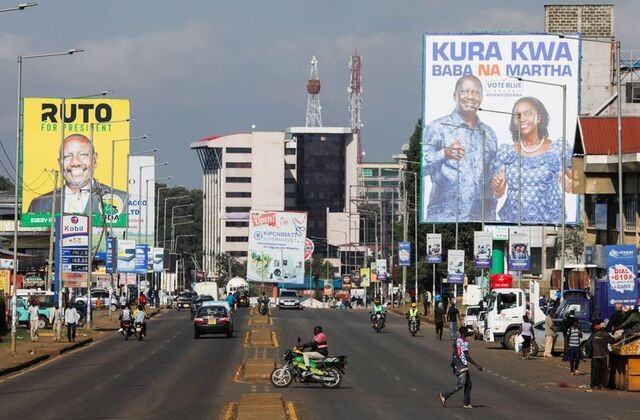Drones, Disinformation & Mercenaries: Africa’s Conflict Redefined in 2025‑26
A sweeping new analysis reveals how three emerging forces—drones, disinformation campaigns and private mercenary forces—are converging to reshape warfare across Africa in 2025‑26. These elements, once marginal, now form a potent nexus that challenges traditional security models and threatens regional stability.
1. The Proliferation of Armed Drones
The rapid spread of unmanned aerial systems (UAS) is transforming battlefield dynamics in the Sahel and other African regions. Both state and non‑state actors now deploy drones not only for surveillance but also for direct strikes. Key militant networks such as JNIM in Mali and Burkina Faso have begun converting hobbyist drones into weaponized platforms, dropping improvised explosives on military positions, as seen in Djibo in early 2025 .
In countries like Sudan, both the national army (SAF) and the paramilitary RSF rely heavily on Turkish-made MALE UAVs (e.g. TB2s), Chinese CH-4s and locally-produced FPV kamikaze drones, which have been used to conduct swarm attacks and precision strikes throughout 2024 and 2025.
Perhaps most strikingly, groups in Nigeria (ISWAP), Somalia (al-Shabaab) and Mozambique (IS‑Mozambique) have adopted drones for propaganda, reconnaissance and increasingly for armed operations—demonstrating a transition from passive to active drone deployment.
2. Weaponized Propaganda and Disinformation
Disinformation campaigns in Africa have surged dramatically since 2022, with foreign actors—particularly Russia, China and Iran—deploying tactical misinformation to influence politics and exacerbate conflict zones :contentReference[oaicite:3]{index=3}.
Examples include covert online networks spreading graphic videos of atrocities to intimidate opponents, as well as paid influencers amplifying anti-Western narratives tied to military juntas in the Sahel. In one region, a whistleblower revealed he had been recruited to write pro-regime stories and suppress dissent in Central African Republic for years.
The dual strategy of drone visuals paired with disinformation allows armed groups to both showcase their reach and sow fear—a psychological toolkit that states struggle to counter in real-time.
3. Gun‑for‑Hire Forces and Private War
The use of hired combatants—particularly mercenary networks—is becoming a defining feature of modern African conflict. In Sudan, Colombian fighters employed by Emirati-aligned private security companies have appeared in Darfur, fighting alongside the RSF and intensifying a humanitarian crisis marked by famine and displacement.
Russian paramilitaries, previously under the Wagner Group banner, continue operations in Mali, CAR, Mozambique and Niger, sometimes transitioning into the newly branded Africa Corps under state authority. These groups do more than fight—they extract economic concessions from host governments, particularly in mining and other resources.
Video footage leaked from these operations often combines graphic imagery with taunting captions—intended both to intimidate and recruit—further amplifying psychological warfare through online platforms.
4. The Convergence: Drones + Digital Lies + Mercenaries
What sets the current era apart is the simultaneous deployment of drones, disinformation machinery and mercenary forces. This multilayered model allows actors to combine kinetic power, narrative control and deniability—all while operating under the radar.
Drones provide real-time visual content for propaganda; digital networks amplify that content to manipulate public sentiment; private soldiers carry out missions that governments can distance themselves from. Together, they enable a hybrid form of warfare where attribution is blurry and civilian populations bear the brunt.
5. Implications for African Stability and Governance
This convergence poses profound challenges:
- Democracies and civilian authorities are increasingly undermined by hidden networks of foreign-backed influence and mercenary actors.
- Security responses lag behind technological developments—especially against inexpensive commercial drones adapted by militias.
- Civilian populations are exposed to psychological terror through online disinformation campaigns that erode trust in state institutions.
- Humanitarian and peacekeeping operations face new risks as conflict zones are amplified by weaponised media and unregulated combatants.
Conclusion: Towards a New Security Architecture
As Africa enters 2026, the intersection of drone technology, cognitive warfare and privatized military force demand urgent rethinking of both policy and practice. National governments and regional bodies must build integrated strategies that include:
- Regulation and countermeasures for drone use, including cheap commercial models.
- Robust public‑information campaigns and digital literacy programs to inoculate populations against disinformation.
- Strict scrutiny of mercenary contracts and transparency on foreign military partnerships.
- Enhanced legal frameworks for attribution and accountability in hybrid warfare.
Only by confronting this multipronged threat can African states hope to preserve sovereignty, protect civilians, and advance stability in an era where conflict is amplified not just by weapons, but by narratives and networks.
For more news: https://africaciviclens.com/
External Links: https://theconversation.com/drones-disinformation-and-guns-for-hire-are-reshaping-conflict-in-africa-new-book-tracks-the-trends-262256




